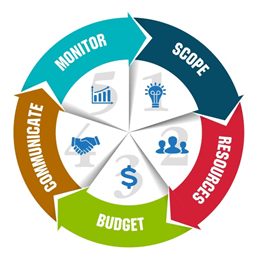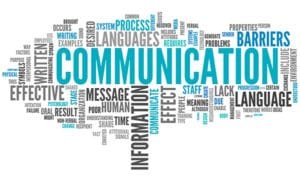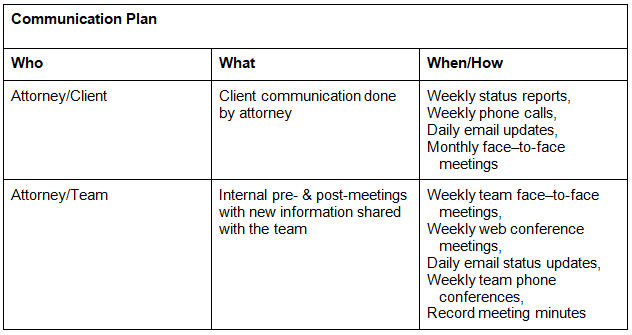Communication
In our previous blog posts, we discussed the scope, resources, and budget as the first three main steps and phases in Legal Project Management. In this blog, we will take a look at Step #4 – Communication. A successful outcome requires open communication; this is key in any project, but most specifically in Legal Project Management.

Communication pathways between the management staff and the team members involved in any project can be much like puzzle pieces.

Getting the right fit involves communicating clearly about team expectations and individual contributions. Without precise language, tasks are not clear, problems remain unresolved, more issues arise, and costly delays are inevitable. To eliminate the vast majority of issues, one must be clear in delivering instructions and be willing to talk as well as listen – then map and execute. A formal description of how information should flow between the team and the client is critical before any execution of work.
Client and team ongoing feedback throughout the life of the project is also an important part of successful communication. No one likes unpleasant surprises in the business world. That goes double for a courtroom, so make sure the message is delivered accurately through all interactions – in-person email, teleconferences, phone calls, note-taking, etc. Once the critical communication paths are open, they must be maintained and monitored. Any form of breakdown along the way can spell disaster.

There are several key communication points in LPM that you should focus on: the client, the lawyer, and the team. Bridging the gaps between them is critical. Any number of simple misunderstandings or irritations in the highly complex world of legal transactions can, and likely will, derail a project.
Many negative results can develop from this including damage to the precious lawyer-client relationship. Solid Legal Project Management practices and principles can improve the way lawyers and clients talk to each other and among themselves. This same concept applies to top company executives as well. Staying accessible and open to feedback will aid the process toward a successful outcome.
It is essential to proactively determine who your recipients and providers of information will be and arrange them in a mapped, structured blueprint. The best way to do that is by mapping a communication plan: a document that shows how the teams communicate, who communicates with whom, and the most effective method for communication.
 This communication plan should follow best practices established by both industry expectations and corporate guidelines. The plan should be a distinct clarification of how your team will use the information and not just deliver it in a haphazard series of emails.
This communication plan should follow best practices established by both industry expectations and corporate guidelines. The plan should be a distinct clarification of how your team will use the information and not just deliver it in a haphazard series of emails.
The form, method, and timing should be defined in this plan. It has the best chance of being a foundation for team unity and strength if it is established from beginning to end.
A formal communication plan maps out who receives and provides communication regarding the content, the frequency, the form, the events, and the flow of information. This is a powerful outline covering who, what, where, when, and why. See a sample of a simple communication plan below.
“The art of communication is the language of leadership.” |
— James Humes

This is just a simplified version of what a communication plan for legal project management might look like. A recent study conducted by the Project Management Institute revealed that ineffective communication had a dramatic negative impact on project success. 57% of a recent survey revealed respondents attributed their high failure rate to poor communication. LPM participants agree this is because the success of the project lies in the effective dissemination of information, clearly stated team goals established upfront, and the regular flow of feedback. Minimize the number of projects lacking effective communications through strong and clear management of information that leaves nothing to the interpretation or to chance.
One of the greatest hurdles still facing legal project management today is the idea that communication plans are often regarded by management as something that just happens as part of the regular organic process. This is a myth – without a well-thought-out communication strategy to monitor and manage the project information’s flow and communication paths, many companies are throwing caution to the wind. Success, in this case, might be only a fluke and not part of a sustainable, repeatable process. Stop wasting time and money using poor communication techniques.

It’s time to take a systematic approach – think, plan, map, and execute your communication within the team. This is your greatest key to success.
In our next blog, we will discuss the final phase of Legal Project Management – Monitoring.
For more on our previous blogs, click below:





